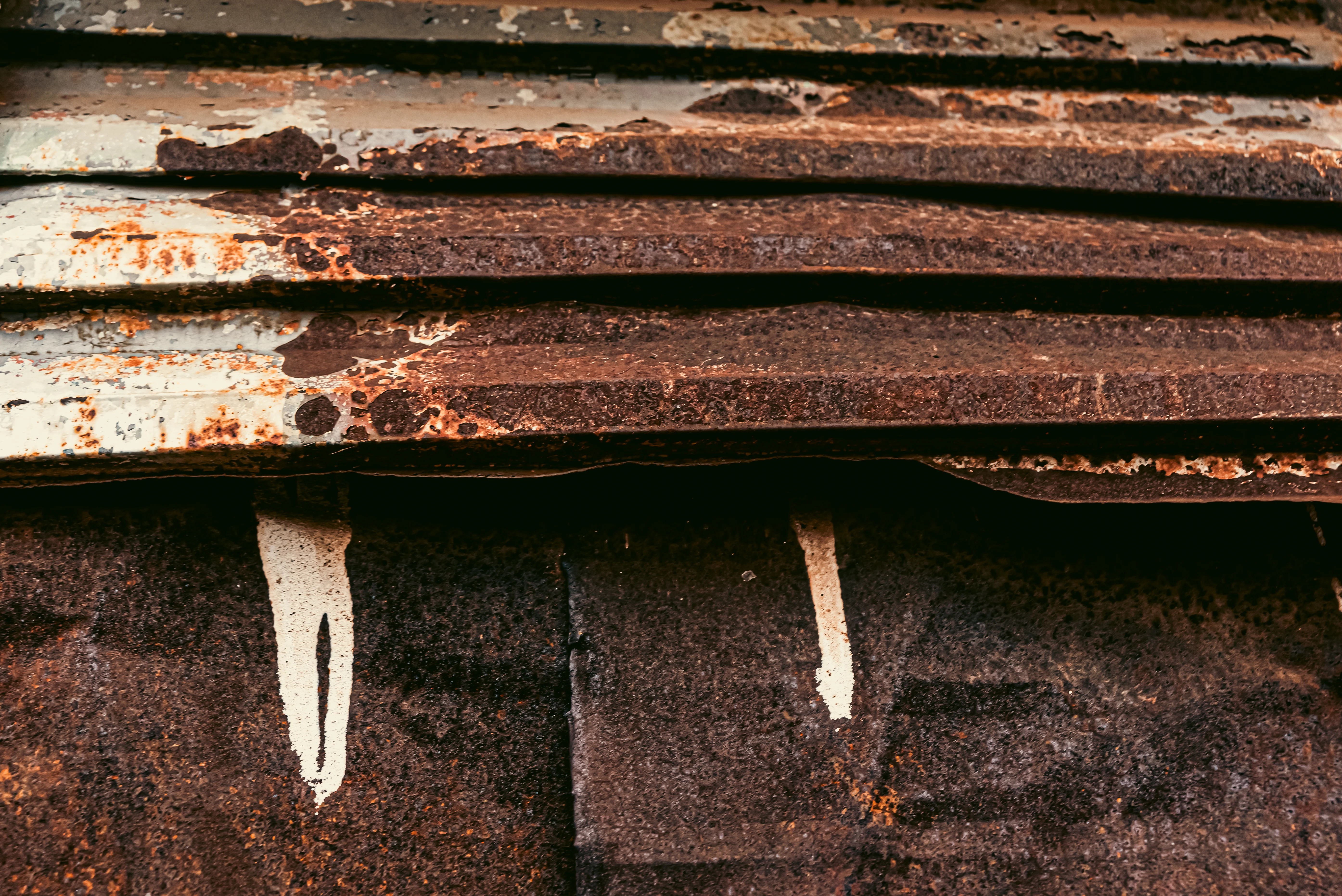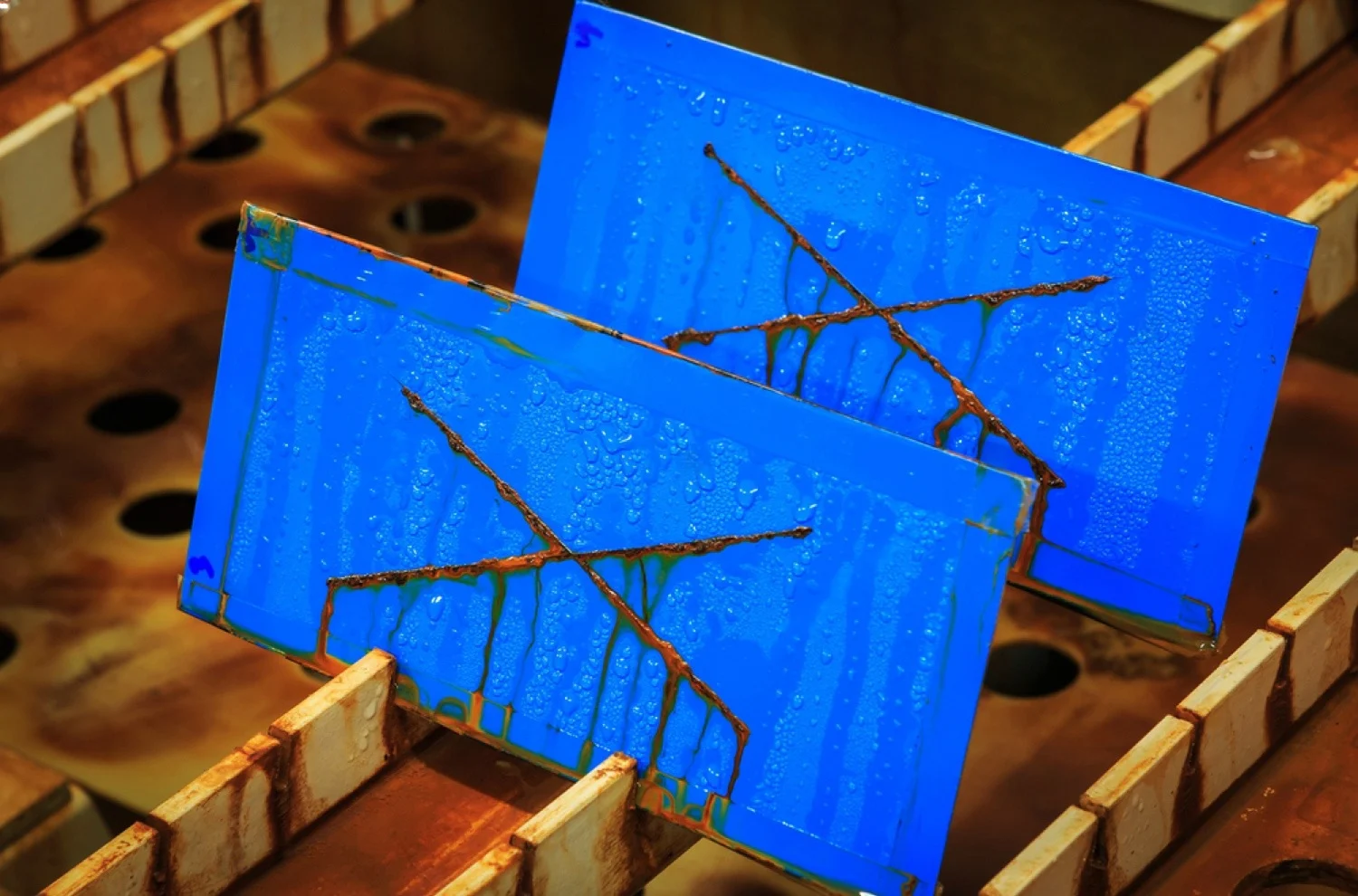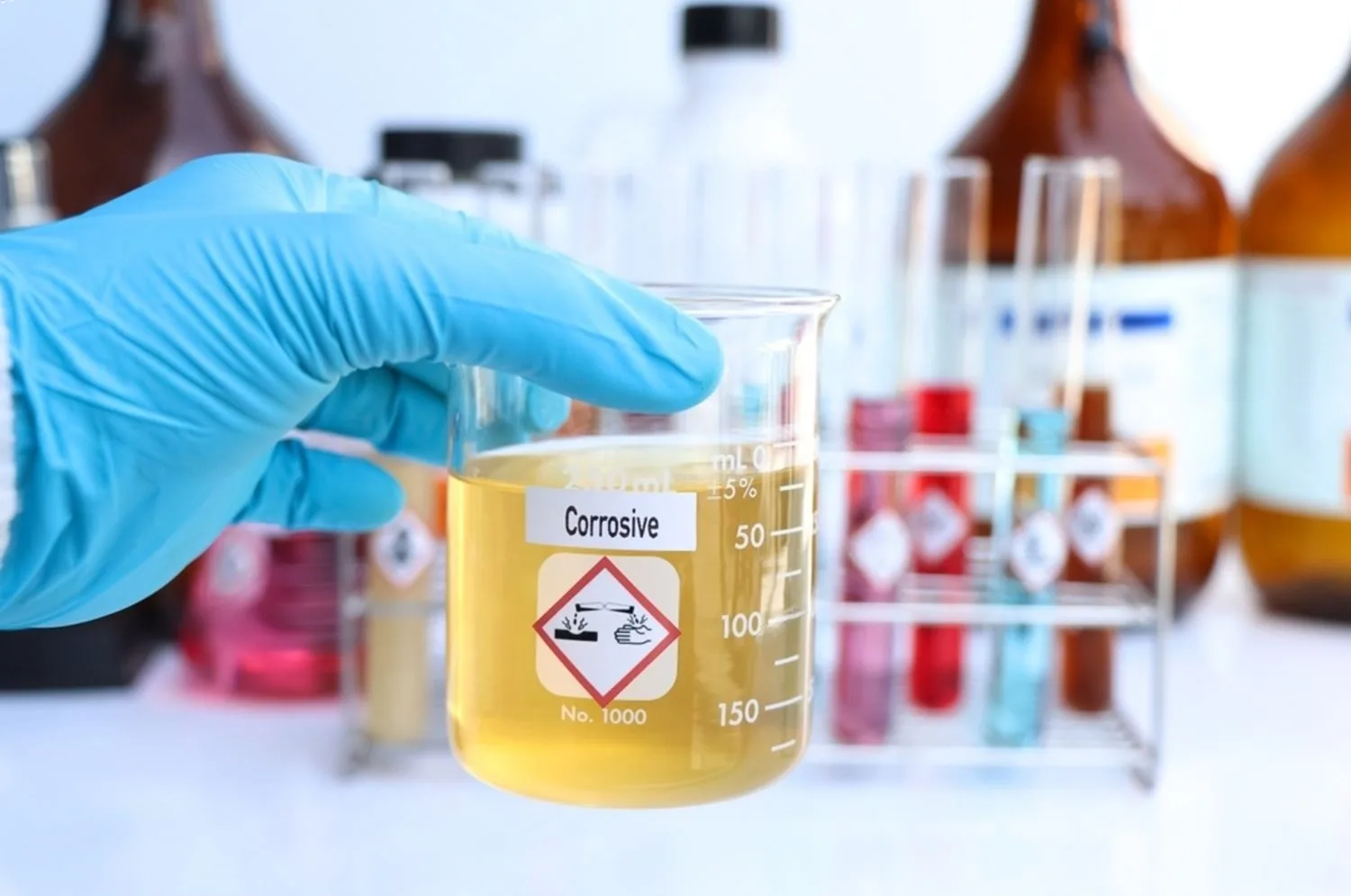Corrosion Testing

Rust is something that, in most cases, does not enter our awareness until it has already manifested itself. One of the fences has a little orange spot on it. Paint that is flaking off a pipe. The weathered appearance of bolts that have been worn. Initially, it was a rather minor irritation. However, as time goes on, corrosion becomes bigger. This activity consists of eating. There is yet more spread of the disease. Even a location that is of little importance has the potential to become a substantial obstacle in the road.
In the UAE, this problem is magnified. Between salty coastal air, humidity, and high temperatures, metal doesn’t exactly get an easy life here. Steel, aluminum, coatings everything is under attack. That’s why corrosion testing isn’t just “extra safety.” It’s essential. If you’ve ever wondered what these tests are all about — terms like salt spray test, salt fog testing, or half-cell potential test — let’s walk through it together. No heavy jargon. Just the practical side of why, when, and how these tests keep projects (and people) safe.
Why Bother About Corrosion?
Here’s a little story. A few years ago, a bridge in a coastal city (not here, thankfully) suddenly closed after inspectors found deep corrosion in the steel supports. It hadn’t collapsed, but it was close. Repairs cost millions. Traffic was a nightmare for months. All because the corrosion went unnoticed until it was almost too late.
That’s what makes corrosion so tricky: it’s slow, silent, and sneaky. And in a place like the UAE, where construction and infrastructure are everywhere — skyscrapers, metro lines, oil facilities, ports — corrosion is a constant shadow.
- The rebar inside concrete towers.
- The pipelines carry oil and water underground.
- The cars and planes are exposed to salty air.
- Even the shiny metal finish on consumer products.
The Main Corrosion Tests You’ll Hear About
There are lots of ways to test for corrosion, but a few methods come up again and again. Think of these like tools in a mechanic’s kit — each one checks for different issues.
Salt Spray Test: A Fast-Forward Button on Rust
Imagine putting a piece of metal into a chamber that mimics years of salty, coastal weather — but instead of waiting years, you see results in days or weeks. That’s what the salt spray test does. It’s simple: a chamber sprays a fine mist of salty solution on the sample continuously. It’s harsh, relentless, and very telling. If the material, coating, or paint can’t survive here, it’s unlikely to survive outside in the real world. This test is a favorite in industries like automotive, aerospace, and construction because it pushes materials to their limits. Think of it as a “stress test” for metal.
Salt Fog Testing: A Gentler but Sneaky Environment
Salt fog testing is similar to salt spray, but the exposure feels more like a constant coastal haze than a downpour. Instead of droplets, you get a mist of salt particles hanging in the air.
Why bother with this version? Because in real life, many structures don’t get hammered by direct spray — they sit in moist, salty environments where corrosion happens quietly, over time. Salt fog testing is a way to mimic that. If salt spray is like dunking your sample in the ocean, salt fog is like leaving it by the shoreline day after day.
Half Cell Potential Test: Seeing Inside Concrete
Here’s the clever one. A lot of the UAE’s infrastructure towers, bridges, parking structures uses reinforced concrete. The steel rebar inside is supposed to stay protected. But salty water can sneak in, and corrosion starts where no one can see it. That’s where the half-cell potential test comes in. Instead of breaking concrete open, we attach electrodes and measure electrical potentials. If the readings are high, it means corrosion is already happening inside the concrete. This test is like a doctor using an X-ray. You don’t see the problem from outside, but the scan reveals what’s really going on. It’s a game-changer for maintenance because it spots issues long before cracks appear.

When Should You Actually Do Corrosion Testing?
The simple answer: sooner than most people think. But let’s put it into real-world situations:
- Before building – If you’re starting a new project, test to make sure the materials and coatings you pick will last in harsh conditions.
- During production, Manufacturers run these tests to prove quality and durability to clients.
- On existing structures – Bridges, parking lots, offshore rigs, pipelines… if they’ve been standing for years, tests help check what’s happening beneath the surface.
- After a problem shows up, if rust or coating failure appears earlier than expected, tests help figure out why.
Think of it like regular health check-ups. Do it before problems become emergencies.
A Day Inside a Corrosion Testing Lab
So what actually happens inside a corrosion testing lab like Falcon Lab UAE?
It’s not as mysterious as it sounds. Picture a space filled with specialized chambers, monitoring equipment, and experts who know exactly how to simulate real-life abuse on materials.
A typical cycle goes like this:
- Samples are prepped — cleaned, cut, coated, or mounted.
- They go into chambers (salt spray, fog, humidity, etc.).
- Conditions are dialed up to match harsh environments.
- The samples sit for hours, days, or weeks while data is collected.
- Experts check for rust, cracks, blisters, or peeling.
- Reports are prepared, not just with numbers but with clear recommendations.
The goal isn’t to scare you with “look how bad this corroded.” It’s to predict and prevent failures in the field.
Why Early Testing Saves More Than Just Money
Take a look at the human side. The purpose of corrosion testing is not limited to the protection of concrete or steel.
- Protecting people’s safety is the first concern; after all, nobody wants to drive over a bridge that has been compromised by rust.
- Projects that require investments can cost billions of dollars, and even minor mistakes can snowball into massive financial losses.
- Time and reputation are both factors that should be considered when deciding whether or not to shut down a facility for emergency repairs.
It’s the classic case of prevention being cheaper — and safer — than cure.

Falcon Lab UAE: Not Just a Lab, A Partner
At Falcon Lab UAE, we’ve seen it all. From shiny new projects that want peace of mind before launch, to aging structures that need a second opinion on hidden damage.
Our laboratories can perform a wide range of tests, including salt spray and salt fog testing, as well as more complex examinations such as the half-cell potential test. But more than equipment, we bring experience. Our team knows how the UAE’s unique climate — salty air, high heat, humidity — pushes materials harder than many other places in the world.
So, when we deliver results, they’re not just numbers. Their advice you can act on. Whether that means picking a better coating, adjusting a design, or planning maintenance schedules, we help you make decisions that last.
Wrapping It Up: Corrosion Doesn’t Wait, So Why Should You?
Corrosion isn’t dramatic. It doesn’t announce itself. It creeps, it waits, and then one day it becomes too big to ignore. That’s why corrosion testing — whether through a salt spray test, salt fog exposure, or half-cell potential checks is so valuable. It’s about staying one step ahead. So, the real question isn’t “Do we need corrosion testing?” It’s “Can we afford not to?” And if you want a partner who understands both the science and the stakes, Falcon Lab UAE is here to help. Because in the end, fighting corrosion isn’t about rust. It’s about building things that last — and keeping the people who use them safe.
QUICK CONTACT
OUR SERVICES
ASK AN EXPERT TO CONTACT YOU
Let's begin by talking....
If you’re searching for geophysical surveying, geophysical services, or geophysical consulting services in the UAE, Falcon Laboratory is ready to help.
ABU DHABI LOCATION
Falcon Laboratory LLC
Store No 1, Plot No 08, Mussafah 32/1,
P.O. Box: 113765,
Abu Dhabi, United Arab Emirates
- 24°21'10.2"N 54°30'45.8"E
DUBAI LOCATION
Falcon Laboratory LLC
Near Dubai Municipality Nursery
Al Warsan Third,
P.O. Box: 231494,
Dubai, United Arab Emirates
- 25°09'27.9"N 55°27'42.6"E
SHARJAH LOCATION
Falcon Laboratory LLC
Al Oufouk B Block, Shop No : 02
Industrial Area 17,
Maleha Road Back Side
Post Box: 71713
Sharjah, United Arab Emirates
- 25°17'13.1"N 55°26'44.7"E
